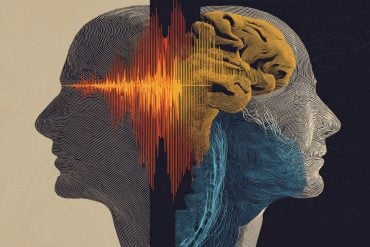Summary: New research reveals that manganese exposure in early life stages may enhance verbal learning and memory during adolescence.
The study, utilizing tooth manganese levels as biomarkers, indicates that prenatal exposure is linked to improved cognitive functions, while postnatal exposure shows no significant association.
This pioneering work underscores the nuanced role of manganese in neurodevelopment.
Key Facts:
- Prenatal manganese exposure correlates with improved adolescent learning and memory.
- Childhood manganese exposure contributes to better memory recall, but postnatal exposure doesn’t show cognitive benefits.
- The study emphasizes the importance of exposure timing on the effects of manganese on brain development.
Source: Boston University
A new study has found that exposure to manganese during the prenatal period and childhood may benefit verbal learning and memory during adolescence.
Manganese is both an essential nutrient and a toxic chemical, primarily obtained through diet, water, supplements, and environmental elements. But the level at which manganese shifts from beneficial to harmful to the developing brain remains unclear.
Children’s susceptibility to the neurotoxic effects of manganese may vary based on when they are exposed to this metal in their lifetime.
A new study led by Boston University School of Public Health (BUSPH) researchers explored this timing of manganese exposure among children and found that manganese exposure early in life may be beneficial for verbal learning and memory during adolescence.
Published in the journal Neurotoxicology and Teratology, the study measured manganese levels through teeth and found that prenatal tooth manganese was linked with fewer memory and learning errors in adolescents, and childhood tooth manganese was linked with better memory recall.
Postnatal tooth manganese (from birth to age 1), however, was not associated with adolescent memory.
The study is the first to analyze manganese exposure from the prenatal period through early childhood in relation to verbal learning and memory in later childhood. The findings validate the importance of the timing of manganese exposure in understanding how this metal may affect neurodevelopment and cognition.
“While most associations in our study were null, there was some evidence that manganese is beneficial for verbal learning and memory in adolescence,” says study senior author Birgit Claus Henn, associate professor of environmental health at BUSPH.
“In early life, it makes sense that we might need more manganese for growth and healthy development, but as we get older, the need for manganese might change.”
The study’s lead author is Alexa Friedman, a doctoral student at SPH at the time of the analysis. For the study, Claus Henn, Friedman, and colleagues utilized data from 2007 to 2014 among 140 Italian adolescents ages 10-14 in the Public Health Impact of Metals Exposure (PHIME) study, a cohort that investigates the health effects of manganese exposure from nearby ferroalloy production.
They examined records of the adolescents’ baby teeth from the second trimester through ~age 6 as a marker of manganese exposure, as well as results from neurobehavioral assessments.
“One of the strengths of this study was the use of naturally shed baby teeth to measure manganese exposure to the fetus, which is otherwise difficult to estimate,” Claus Henn says, adding that in past studies she has utilized biospecimens from the mother or from the baby at birth.
“The tooth biomarker allowed us to measure retrospective exposure during multiple exposure periods spanning distinct developmental stages, thus allowing us to evaluate associations in a prospective manner and to establish temporality between exposure to manganese and neurobehavioral outcomes.”
Manganese associations with verbal learning and memory also differed by gender in the results, with stronger beneficial associations among male adolescents for both prenatal and childhood manganese exposure.
One possible explanation for the null associations between postnatal tooth manganese and adolescent memory could be that children in the first year of life may not be as sensitive to manganese-related changes in adolescent cognition as children in the prenatal or childhood exposure periods, the researchers say.
Claus Henn is also senior author of another new study, published in the journal Environmental Epidemiology, which examined tooth manganese and attention-related behaviors among Italian adolescents.
The findings showed that prenatal manganese was similarly beneficial for adolescent behavior, but postnatal and childhood manganese were not—in fact, postnatal manganese was associated with worse behavior scores.
Future studies should examine these early-life manganese associations among larger study groups, as well as explore how manganese levels in teeth relate to manganese levels in the environment and in our diets, including drinking water, Claus Henn says.
“We know that manganese levels in teeth reflect levels in the environment, but it would be nice to tie those more directly back to levels in water, air, diet, and other sources, so that we can make recommendations about safe and/or optimal levels of exposure—particularly during critical life stages of pregnancy and childhood,” she says.
“It would also be useful to look more comprehensively at impacts on the brain, because verbal learning and memory is just one aspect of neurobehavioral functioning.”
About this neurodevelopment, memory, and learning research news
Author: Jillian McKoy
Source: Boston University
Contact: Jillian McKoy – Boston University
Image: The image is credited to Neuroscience News
Original Research: Open access.
“Early-life manganese exposure during multiple developmental periods and adolescent verbal learning and memory” by Birgit Claus Henn et al. Neurotoxicology and Teratology
Abstract
Early-life manganese exposure during multiple developmental periods and adolescent verbal learning and memory
Background
Manganese (Mn) is both an essential and toxic metal, and associations with neurodevelopment depend on exposure timing. Prospective data examining early life Mn with adolescent cognition are sparse.
Methods
We enrolled 140 Italian adolescents (10–14 years old) from the Public Health Impact of Metals Exposure study. Mn in deciduous teeth was measured using laser ablation-mass spectrometry to represent prenatal, postnatal and early childhood exposure. The California Verbal Learning Test for Children (CVLT-C) was administered to assess adolescent verbal learning and memory. Multivariable regression models estimated changes in CVLT-C scores and the odds of making an error per doubling in dentine Mn in each exposure period. Multiple informant models tested for differences in associations across exposure periods.
Results
A doubling in prenatal dentine Mn levels was associated with lower odds of making an intrusion error (OR = 0.23 [95% CI: 0.09, 0.61]). This beneficial association was not observed in other exposure periods. A doubling in childhood Mn was beneficially associated with short delay free recall: (ß = 0.47 [95% CI: −0.02, 0.97]), which was stronger in males (ß = 0.94 [95% CI: 0.05, 1.82]). Associations were null in the postnatal period.
Conclusion
Exposure timing is critical for understanding Mn-associated changes in cognitive function.








